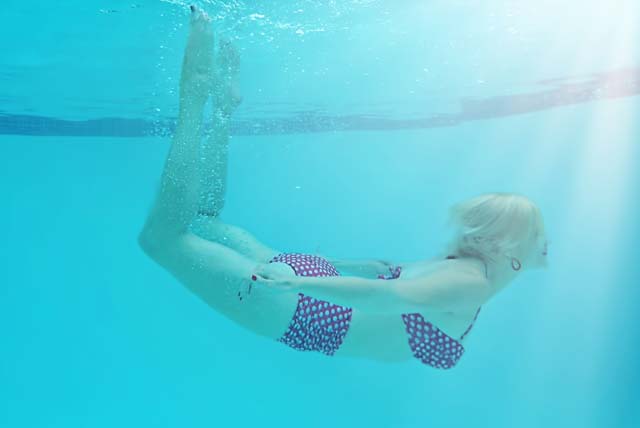Swimming yoga

At a coaching conference six years ago a prominent American coach pulled me aside to ask me what I thought about yoga. At that time I had been practicing yoga for seven years. At the same time I had also begun including it as part of the training program for the athletes I was coaching. Today I am trained as a yoga teacher and will soon be a yoga therapist.
The following article includes the thoughts that I shared with my friend at that coaching conference mixed combined with the insight I have gained since that time. The following are seven ways yoga can help swimmers improve their performance.
Mobility
The most common reason that swimmers will use yoga is to become more flexible.
I tend to stray away from the word flexibility, I feel that mobility is much more appropriate. Why I am specific about the language is that in an attempt to become more flexible many sacrifice stability to increase range of motion. By doing this joints can be compromised.
When focusing on mobility in a swimming yoga practice it will increase range of motion and lengthen muscle tissue while stabilizing a joint forming greater integrity and strength.
Strength
There are many ways that yoga can be used to develop strength.
Core strength is used in any dynamic pose and is part of many static poses.
The choice of poses and sequences can also develop both upper body and lower body strength, once again both in a dynamic and static manner.
As long as proper movement patterns are followed it is functional strength that is being developed. A yoga program can be designed to use specific movement that is applicable to the sport of swimming.
Body awareness
Yoga is a very effective way to develop body awareness.
Some of the best and most coachable athletes I have worked with have had a tremendous amount of body awareness. Because of this fact they develop technical proficiency and make technical changes with greater ease.
A yoga practice develops body awareness through having swimmers perform movement patterns that they are unaccustomed to which develops greater variability within the nervous system.
Greater body awareness is also developed through the encouragement of bringing specific attention to how the body feels at different points in the practice.
Ease of movement
Effortless effort is a term that is used often when teaching yoga. Performing with effort while at the same time as moving with ease is something that is taught very specifically in many yoga practices.
Yoga teaches this skill through the use of the breath. Learning to use breath in co-ordination with movement allows us to perform in a much more relaxed state.
When first using this term with a group of swimmers one of the athletes I coached reacted by saying ‘Easy speed!’
He hit the nail on the head. Being able to perform with easy speed is one of the goals of a taper, which is one of the reasons it feels so miraculous.
Easy speed is about being in a state of ‘flow’. Mihaly Csikszentmihalyi, the foremost expert on the subject, feels that there is a strong connection between yoga and flow:
The similarities between Yoga and flow are extremely strong; in fact it makes sense to think of Yoga as a very thoroughly planned flow activity. Both try to achieve a joyous, self-forgetful involvement through concentration, which in turn is made possible by a discipline of the body.
Recovery
A lot of times swimmers find because they have limited mobility due to tight and stiff muscles a yoga class be a struggle. When you add that on top of the demands of the sport it can become too much.
There are many different styles and types of yoga because of that reason a practice can be tailored specifically for recovery without any struggle involved, no matter how tight you are.
One of the most effective ways to enhance recovery is through restorative yoga. In restorative yoga you use props to support the body in different poses, which in turn encourages and allows the body to let go.
This style of yoga will also engage the parasympathetic nervous system which allows the body to recover even more effectively.
Injury prevention
By using aspects of yoga that develop mobility, strength, body awareness, ease of movement and recovery a practice can built that is specifically aimed at injury prevention.
Therapeutic yoga is an extremely effective way to both prevent as well as rehabilitate many types of injuries and illnesses.
As you would do with any dry land program past injuries, strength imbalances and movement deficiencies are taken into consideration when building a practice. Then the practice can be built around addressing all of the above vulnerabilities and needs an athlete may have.
The mental game
The psychological aspect of both racing and training is incredibly integral to achieving success in swimming. Yoga can be a tool to develop many mental skills.
Now let me be clear, I am not talking about chanting, I am not talking about opening your chakras. What I am talking about is learning skills to reduce anxiety before races, monitor and adjust self-talk and visualize.
All of which can be transferred to the pool.
Source: http://swimswam.com/7-reasons-why-swimmers-should-do-yoga/
Yoga is great for any sport. Read about benefits of yoga for sportsmen.
